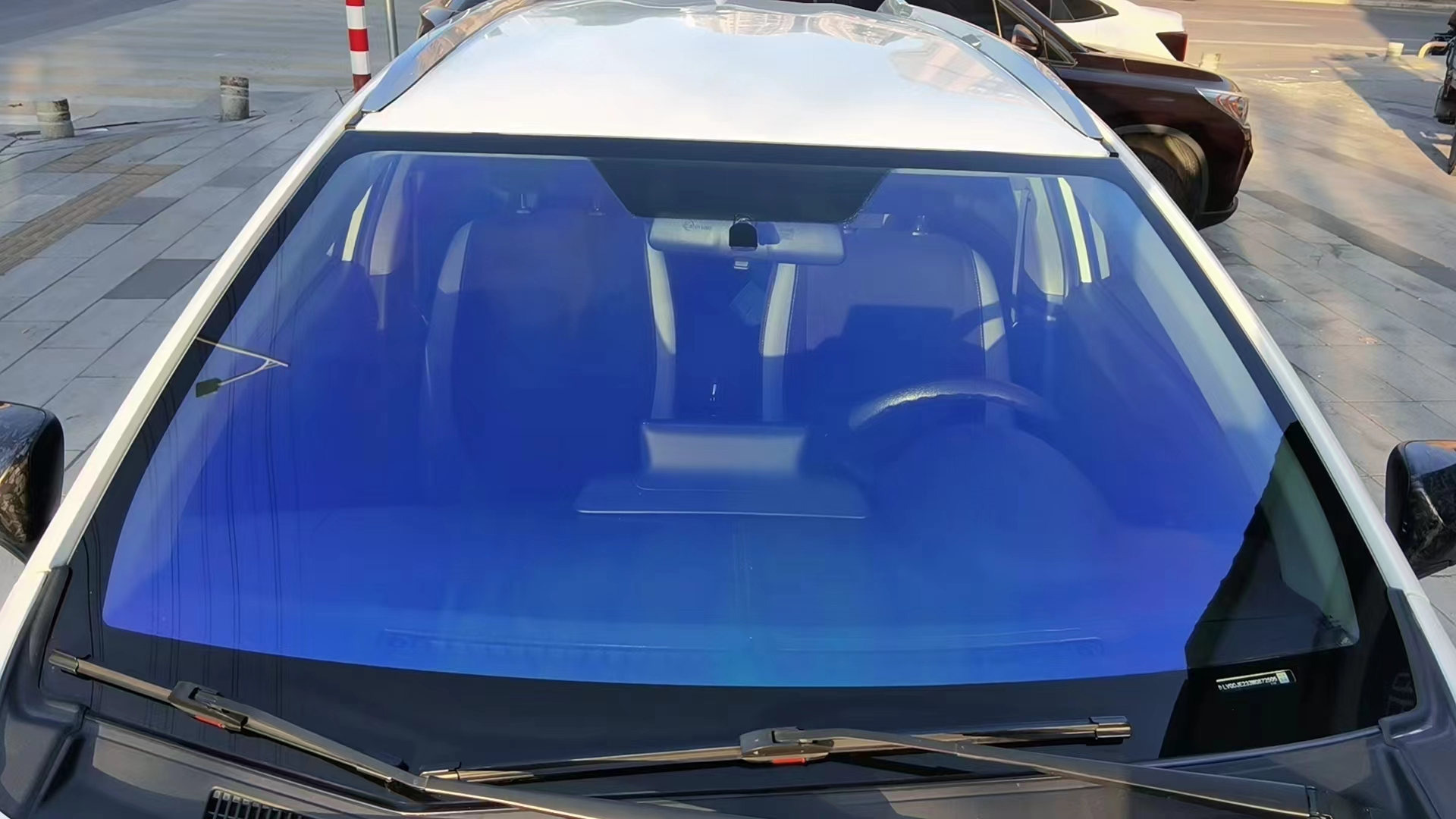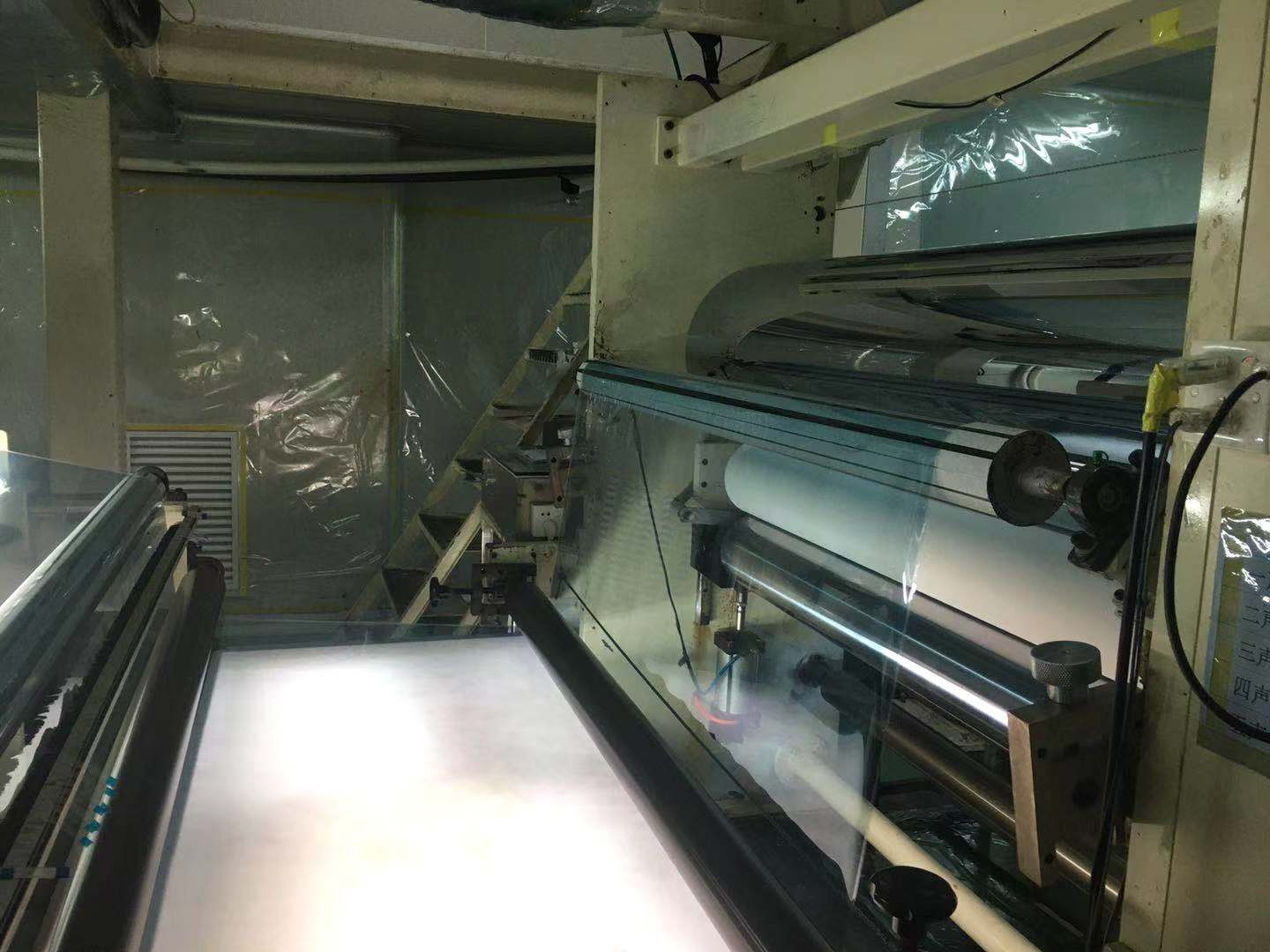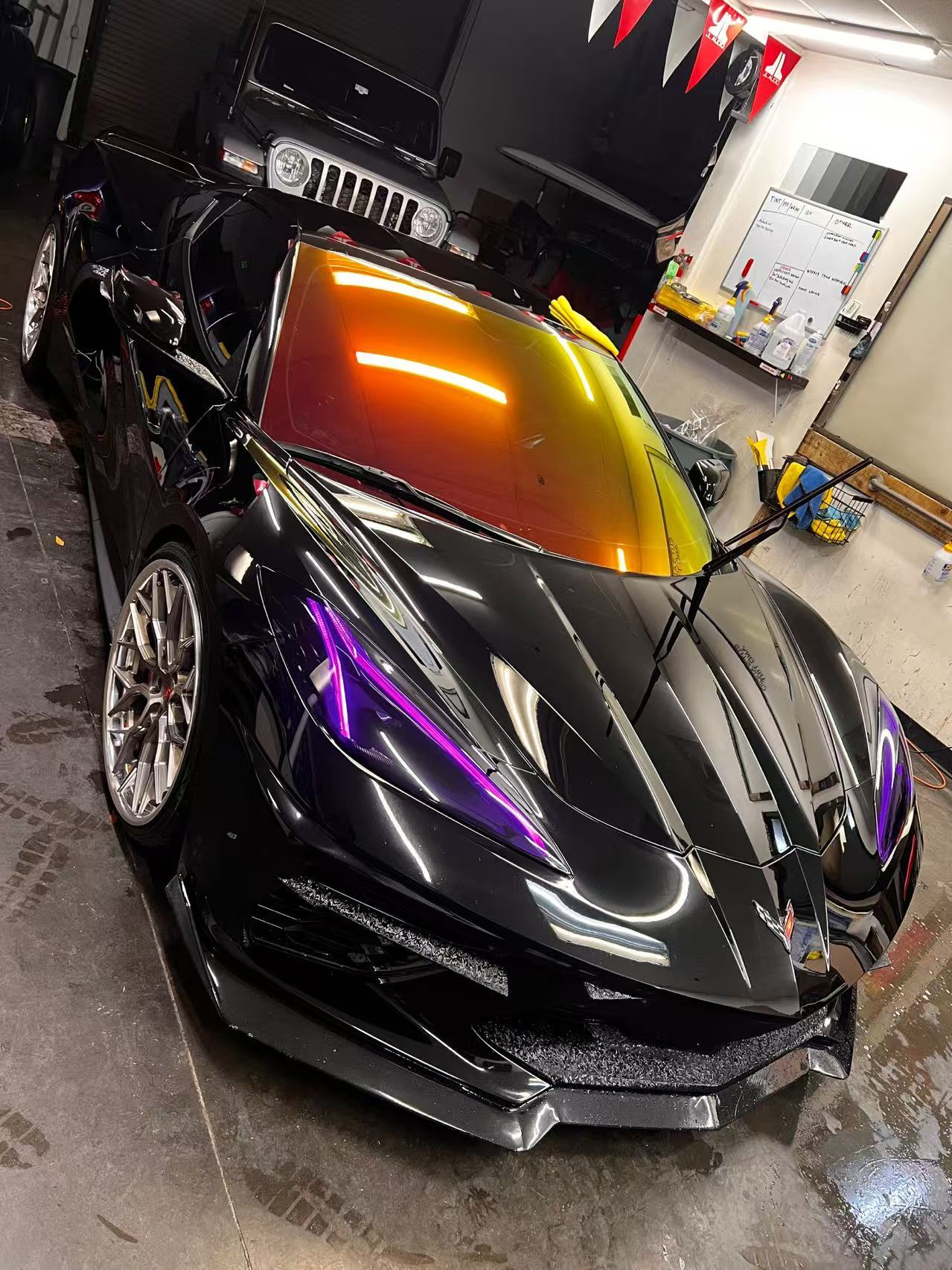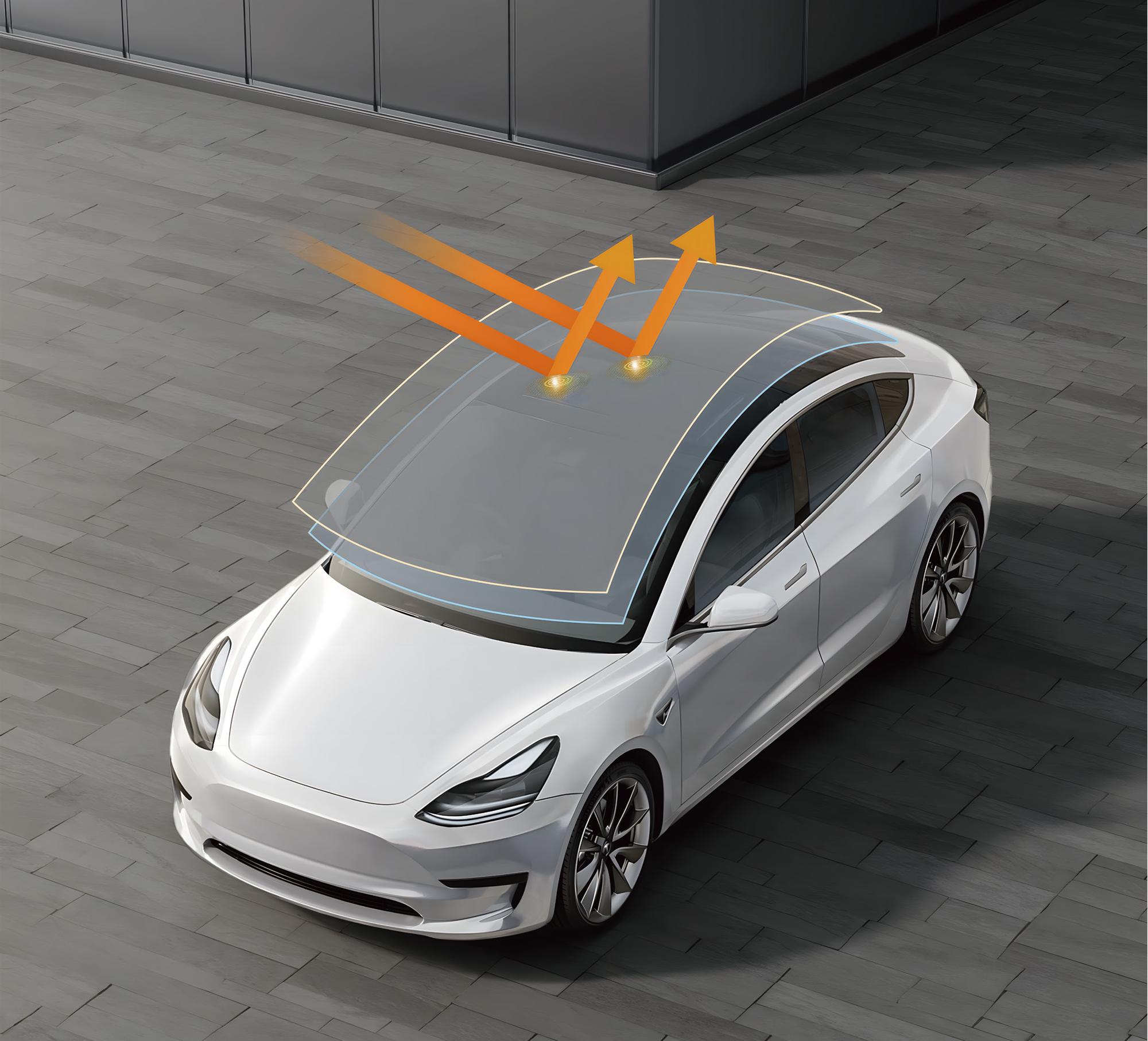Window tinting is a popular modification that enhances the aesthetic appeal and functionality of car windows. It involves applying a thin laminate film to the glass surfaces, providing benefits such as UV protection, heat reduction, and increased privacy.
Understanding installation methods for window tinting is crucial for car owners. The choice between installing tint on the inside or outside of a car window can impact durability, appearance, and performance. This article delves into these installation methods, addressing the common question: Does window tinting go on the inside or outside of a car window?
In this article, you will learn:
The fundamentals of window tinting.
The benefits associated with different types of films such as Nano Carbon and Nano Ceramic films.
Insights into whether interior or exterior application is more prevalent and why.
This comprehensive guide will help you make informed decisions about your vehicle’s window tinting needs. Furthermore, we will explore unique options like Chameleon films, which provide a distinctive look to your vehicle while enhancing its value.
For high-quality window film production and wholesale supply including nano ceramic, Nano Carbon, HP, Paint Protection, commercial and security films, KSB stands out as a premier manufacturer in China.
Understanding Window Tinting
Window tinting involves applying a thin laminate film to glass surfaces, primarily to reduce heat and glare. It serves both functional and aesthetic purposes, enhancing privacy while also protecting interiors from harmful ultraviolet rays. Whether applied to vehicles or buildings, window tinting provides a significant upgrade in terms of comfort and energy efficiency.
Benefits of Window Tinting
- Heat Reduction: Tinted windows help in minimizing the heat entering through the glass, which can lead to reduced cooling costs in buildings and more comfortable driving conditions.
- UV Protection: It blocks up to 99% of harmful UV rays, preventing potential damage to skin and interiors such as fading of car upholstery or furniture.
- Glare Reduction: Reduces glare from the sun or headlights at night, offering better visibility and safer driving experiences.
- Enhanced Privacy and Security: Keeps prying eyes from peeking into your vehicle or home, adding an extra layer of privacy and security.
- Aesthetic Appeal: Provides a sleek look that can enhance the overall appearance of cars and buildings
Types of Window Films
Understanding the types of window films available can help you choose the right one for your needs:
-
Dyed Window Film
This is the most cost-effective option. It absorbs solar heat and reduces glare without interfering with radio waves or GPS signals. However, it may fade over time.
-
Metallic Window Film
Known for its durability and effectiveness in blocking heat. It reflects heat away from windows but may interfere with phone reception or radio signals due to its metallic content.
-
Ceramic Window Film
The premium choice among window films. Nano Ceramic films offer excellent heat reduction, UV protection, and clarity without any interference with electronic signals. They are also highly durable and less prone to fading.
Choosing between these types of window films depends on your specific requirements, budget, and desired features. Each type offers unique benefits that cater to different preferences, ensuring there’s an option suitable for every situation.
For those on a budget but still seeking quality performance, HP Carbon Films provide an affordable yet high-quality alternative. These films offer superior heat rejection and optical clarity, making them a popular choice among high volume tint shops.
Lastly, for an effective installation process, it’s crucial to have the right tools. A comprehensive selection of high-quality window film tools can significantly enhance efficiency and precision in your tinting projects. From precision cutting tools to professional-grade squeegees, having the right equipment is essential for flawless window tint installations
Where Does Window Tinting Go?
When deciding on window tinting for your vehicle, a common question arises: Does window tinting go on the inside or outside? The prevalent practice in the industry is to apply tint to the interior of car windows. This method offers several advantages that make it the preferred choice among professionals and car owners alike.
Common Practices in Window Tint Installation
Most window tint installations occur on the interior side of the glass. This approach helps protect the film from external elements that could cause wear and tear.
Reasons for Choosing Interior Over Exterior Tinting
1. Enhanced Durability
Interior application shields the tint from rain, wind, and debris. The protection from environmental factors ensures a longer lifespan for the tint.
2. Protection from Environmental Factors
By applying the tint inside, you prevent exposure to UV rays and weather conditions that can degrade or fade exterior tints over time. For instance, Nano Ceramic Window Films are engineered for superior heat rejection, UV protection, and optical clarity, making them an excellent choice for interior applications.
3. Improved Aesthetic Appeal
Interior tints tend to have a cleaner look since they are less likely to be affected by scratches or other damage that might occur if applied externally.
The decision between interior vs exterior window tinting should consider these significant benefits. Although some might consider exterior applications for specific purposes or aesthetic preferences, interior applications remain dominant due to their practicality and longevity. As you explore how window tint is applied, understanding these reasons can guide you towards making an informed choice tailored to your needs.
In addition to traditional window tints, there are advanced options available such as Paint Protection Film, which offers superior protection against scratches and abrasions while also being easy to install.
Application Process for Window Tinting
- Applying window tint on the inside of a car window is a meticulous process that requires attention to detail. If you’re considering a DIY approach, following a structured step-by-step guide can ensure success.
Step-by-Step Guide to Interior Application
- Gather Your Materials: You’ll need window tint film, application solution, a squeegee, a utility knife, a heat gun, and lint-free cloths.
- Clean the Window Thoroughly: Use a glass cleaner and lint-free cloth to remove any dirt or debris. This step is crucial as any particles left can cause bubbles in the tint.
- Cut the Film to Size: Measure the window and cut the film slightly larger than needed. This allows for trimming later.
- Peel Away the Film’s Backing: Carefully peel back the protective layer from the tint film while spraying it with an application solution to prevent it from sticking prematurely.
- Position the Film on the Inside of the Window: Align it carefully at the top edge and allow it to drape downwards.
- Use a Squeegee to Smooth Out Bubbles: Starting from the center, push out air bubbles towards the edges with steady pressure.
- Trim Excess Film: Use a utility knife to trim around seals and edges for a perfect fit.
- Apply Heat if Necessary: Use a heat gun to shrink-fit any remaining creases or bubbles by gently warming up and smoothing out trouble spots with your squeegee.
For those questioning “Does Window Tinting Go On The Inside Or Outside Of A Car Window?”, this process confirms it typically goes on the inside, offering protection against environmental factors while enhancing durability and visual appeal.
However, it’s worth noting that there’s also an option for PPF (Paint Protection Film), which is engineered to resist yellowing and cracking, providing superior protection for vehicle’s paintwork while also being easy to install.
Professional vs. DIY Installation
When deciding between hiring a professional or doing it yourself for window tint installation, several factors come into play. Hiring a professional offers distinct advantages, like:
- Expertise: Professionals have the experience and knowledge to handle various tint types and application challenges.
- Quality: You can expect a high-quality finish with fewer bubbles or imperfections.
- Warranty: Many professionals offer warranties on their work, providing peace of mind.
On the other hand, opting for a DIY installation provides benefits such as:
- Cost Savings: DIY projects can be significantly cheaper without labor costs.
- Flexibility: You have the freedom to work at your own pace and schedule.
Yet, there are drawbacks to both options. Professional installations may be costly upfront, while DIY methods carry risks of improper application leading to wasted materials or subpar results. Understanding these pros and cons helps in making an informed decision on which path best suits your needs and skill level.
Legal Considerations for Window Tinting
Understanding window tint laws is crucial to avoid penalties and ensure your vehicle remains roadworthy. Each state in the U.S. has its own regulations regarding the allowable tint shades, which dictate how dark or reflective your window tint can be.
Key Points to Consider:
- Visible Light Transmission (VLT): This percentage indicates how much light can pass through your windows. A lower VLT means a darker tint. States have different VLT requirements, usually varying between the front, side, and rear windows.
- Reflectivity Limits: Some states also regulate how reflective your window tint can be. This is to prevent excessive glare that might impair visibility for other drivers.
- Windshield Tinting: Typically, states allow only a non-reflective strip on the top portion of the windshield. The allowance varies, so it’s essential to check specific guidelines.
Importance of Compliance:
Failing to comply with local window tint laws can result in fines or being mandated to remove the illegal tint. It’s advisable to consult with local authorities or professional installers who are familiar with these regulations before applying any tint. Adhering to these laws ensures not only legal compliance but also contributes to road safety for everyone.
-
Choosing the Right Window Film
When selecting a window film, it’s important to consider high-quality options that comply with legal standards. For instance, Nano Ceramic Window Films are known for their exceptional heat rejection, UV protection, and optical clarity. These films not only enhance comfort inside the vehicle but also meet various state regulations regarding window tints.
-
Essential Tools for Window Tinting
If you’re considering a DIY approach to window tinting, it’s crucial to have the right tools. A comprehensive selection of high-quality window tint tools designed for efficiency and precision can significantly improve your results. From precision cutting tools to professional-grade squeegees, having the right equipment is key for flawless installations.
-
Professional Assistance
If you’re unsure about tackling the window tinting process yourself, seeking professional help is always a good option. Professionals not only have access to high-quality products like Nano Ceramic Film but also possess the expertise needed for a successful installation.
For those in need of such high-quality window film solutions or expert guidance in their tinting projects, reaching out to a reliable manufacturer like KSB could be beneficial. They offer exceptional products and services tailored to meet the needs of both individual customers and tint shops alike. You can easily contact KSB for more information on how they can assist you with your window film needs.
Final Thoughts on Choosing Between Interior and Exterior Window Tinting
Deciding between interior vs exterior window tinting involves weighing several factors. Consider the following:
- Durability: Interior tints typically offer greater longevity as they are protected from external elements.
- Aesthetic Appeal: Many prefer the seamless look of interior tints.
- Protection: Interior applications better shield against environmental damage.
It’s crucial to assess these aspects based on your priorities and vehicle usage. Whether you’re wondering, “Does window tinting go on the inside or outside of a car window?”, the answer often lies in individual needs and preferences.
To ensure an informed decision, it’s advised to consult with a professional installer. Gaining insights from experienced technicians can provide clarity, especially concerning legal compliance and technical specifications. Alternatively, engage in thorough research to understand which option best suits your requirements. Your vehicle’s tinting is not just about style but also functionality and legality.
FAQs (Frequently Asked Questions)
Does window tinting go on the inside or outside of a car window?
Window tinting is predominantly applied to the inside of a car window. This interior application enhances durability, protects against environmental factors, and improves aesthetic appeal.
What are the different types of window films available?
There are several types of window films available in the market, including dyed, metallic, and ceramic films. Each type serves different purposes and offers unique benefits for both cars and buildings.
What are the benefits of window tinting?
Window tinting provides numerous benefits such as reducing heat and glare, enhancing privacy, protecting against UV rays, and improving the overall aesthetic of your vehicle or building.
What should I consider when choosing between professional installation and DIY for window tinting?
When deciding between professional installation and DIY, consider factors such as your skill level, budget, time availability, and the complexity of the installation process. Professionals may offer better results but at a higher cost.
Are there legal considerations for window tinting?
Yes, there are state regulations regarding allowable tint shades. It is important to comply with local laws to avoid fines or penalties. Always check your local regulations before applying window tint.
What steps should I follow for a successful interior application of window tint?
For a successful interior application of window tint, ensure that the surface is clean and free from debris, measure and cut the film accurately, apply it carefully using a squeegee to eliminate air bubbles, and allow it to cure properly according to manufacturer instructions







